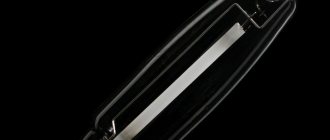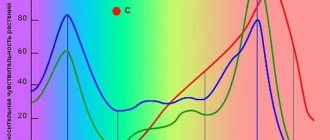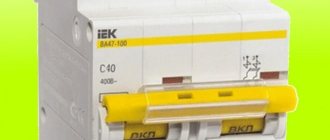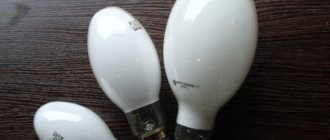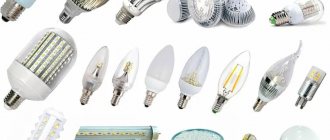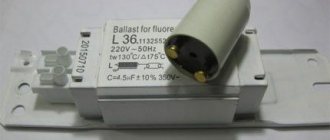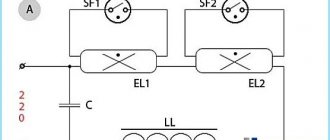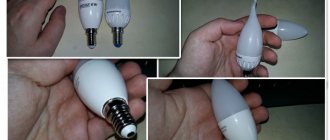Among all the lamps for artificial lighting of plants, the sodium lamp, which is very popular, is most suitable.
This light source is highly efficient, and is the most economical and durable. The lamp power can range from 30 to 1000 W, depending on the area of use. As for the service life, the lamp life is designed for 25,000 hours of operation. For most greenhouses, this is a profitable option in terms of savings, since the plants need to be illuminated for quite a long time, especially in winter.
Domestic products
Russian Reflex lamps, which are equipped with a built-in reflector, are in great demand on the market. Due to this, the light is directed directly at the plants. The reflector of Reflux lamps has a high efficiency of 95%, which is maintained throughout the entire period of operation. Typically, one Reflax lamp with a power of 70 Watt, suspended at a height of half a meter, is capable of illuminating an area of about 1.6 m2. And since the use of other light sources implies high energy costs, the use of Reflux lamps is more rational. As for the dimensions, Reflax has dimensions of 76x200 mm. Thanks to this, Reflex lamps are best suited for greenhouse owners.
Advantages and disadvantages of sodium lamps
The sodium lamp has significant advantages: • High efficiency. • Stable light flow. • High luminous efficiency of approximately 160 lm/W. • Long service life, which is 1.5 times longer than the service life of other similar lamps. • The lamps have a pleasant golden-white emission. • Effective work in foggy conditions. Due to the fact that the Reflex 250 arc lamp emits a red spectrum, it is an ideal light source for flowering plants, including fruit-bearing ones. And the presence of a blue light spectrum contributes to their active growth and development. In addition, the lamps can operate in a wide temperature range - from -60 to +40 degrees. Along with the advantages, there are also some disadvantages. The main one is the complexity of the connection. The usual method is not suitable here, and there are some peculiarities here. Other disadvantages include the following: • Explosion hazard. • Presence of mercury in the lamp structure. • Long turn-on time, which can be up to 10 minutes. • Not suitable for growing non-flowering or green vegetable crops (radish, onion, lettuce). In addition, if it is necessary to use high-pressure sodium lamps of 250 watts or more, care must be taken to ensure cooling as the lamps become very hot. Although for large greenhouses this disadvantage can turn into an advantage by providing the plants with additional heating.
Application area
Rice.
6. Scope of application of DnaT lamps The greatest use of DnaT was received as street lamps for illuminating the territory of cities, parks, highways and other objects. Indoors, they are often installed to illuminate greenhouses for the growth of various crops; they can have a mixed range of light for different plants. At home, they are installed to illuminate seedlings and other house plants, flowers, etc. They have proven themselves well in lighting sports facilities, stages and other locations for public events.
Principle of operation
In appearance, sodium light sources are somewhat similar to DRL lamps. There is also a glass flask of an elliptical or cylindrical shape; inside it there is a discharge tube (“burner”), on each side of which there are electrodes. These leads are connected to a threaded base. Due to the fact that sodium vapor has a strong effect on glass, this material is not suitable for making a “burner”. It is made from polycor (polycrystalline aluminum oxide), which increases resistance to sodium vapor and transmits up to 90% of visible light. The DNAT 400 lamp has a discharge tube with a diameter of 7.5 mm and a length of 80 mm. The tube electrodes are made of molybdenum. In addition to sodium vapor, the discharge tube composition contains argon to facilitate starting the lamps, and also contains mercury or xenon, which allows for increased luminous efficiency. During operation, the “burner” heats up to 1300 °C and in order to keep it intact, air is pumped out of the flask. However, it is difficult to maintain a vacuum while the lamp is running, as air can enter through the holes. Therefore, special gaskets are used to prevent this. It is worth noting that when the lamp is operating, its bulb heats up to 100 °C. When the pulse ignition device (IZD) is turned on, a pulse voltage is created, resulting in the formation of an arc. But at first, the sodium lamps DNAT reflex 250 still shine weakly, since all the energy is spent on heating the tube. After 5 or 10 minutes, the brightness of the light returns to normal.
How to connect a sodium lamp
Due to the special structure of gas-discharge lamps, it is not possible to simply connect them to a household electrical network, since the available voltage is not enough to start. In addition, the arc current must be limited. And sodium lamps are no exception. In this regard, it is necessary to use a ballast or ballast in the circuit. They can be electromagnetic (EMP) or electronic (EPG). In practice in Western countries, such devices are called Magnetic Ballast (for electronic ballasts) and Digital Ballast (for electronic ballasts). In some cases, it is impossible to do without the use of a pulse ignition device or IZU. The use of electronic ballasts for sodium lamps 250 is necessary for their heating and further uninterrupted operation. In this case, the startup itself takes 3-5 minutes, and the sodium lighting sources gain full power within another 10 minutes. It is noteworthy that at the moment the lamp is started, its rated voltage increases almost 2 times.
Starting equipment
Due to its structure, DNAT requires additional equipment for connection. This is due to the fact that the light source does not have enough voltage to start, in addition, the arc voltage must be reduced. It is for this purpose that the ballast apparatus, as well as the IZU, are used.
An electronic ballast has many advantages compared to electronic ballasts (electromagnetic). The only drawback is that the first type of device is more expensive.
Chokes help reduce voltage ripple, smooth out the current frequency, or eliminate its variable component. That is, they limit and stabilize electrical voltage. It is enough to simply connect the ballast to the lamp for the device to work without interruption.
Today, outdated two-winding electronic ballasts have been replaced by modern single-winding devices.
The choke must have the same power as the lamp to which it will be connected. Otherwise, the lighting device will fail faster or the light output will decrease. For example, if you purchased a 250W HPS, then the power of the electronic ballasts should be the same.
Ballast device
The ballast consists of three main components: • Inductive choke. • IZU. • Phase compensating capacitor. The choke serves to limit the arc current and its power must be the same as that of the lamp used. For example, if a HPS 250 lamp is used, then, accordingly, the power of the inductor should also be no less and no more than 250 Watts. Recently, the connection diagram for lamps often includes a single-winding choke, while double-winding ones are already obsolete. IZU is necessary to increase the voltage to several kilovolts in order to form an arc. The power of the IZU can range from 35 to 400 Watts. In addition, the device can be of a two-pin or three-pin design. Moreover, the use of three-pin IZU is preferable. As for the capacitor, this is an optional component. But its presence provides certain advantages, as it allows you to reduce the load on the household electrical network. In turn, this reduces the risk of a wiring fire to a minimum. More details will be discussed below.
Main characteristics
Recently, DNAT is often used to replace DRL and other types of lamps in view of improving the design and increasing their technical parameters, the requirements for which were established by GOST R 53073-2008.
The most relevant characteristics for them are:
- the permissible temperature range is from – 30°C to +50°C; for areas with a particularly aggressive environment, you can find HPS models with a higher temperature limit.
- The lamp efficiency is about 30%;
- power consumption ranges from 30 W to 1 kW, indicated by numbers in the lamp marking after the letters DNaT;
- service life ranges from 6,000 to 25,000 hours;
- capable of producing a flow ranging from 3,500 to 130,000 Lm, depending on the lamp model;
- the efficiency of HPS is in the range from 80 to 130 Lm/W, which brings them closer to LED lamps;
- the emission spectrum is in the region of 2000 K, and the color rendering coefficient Ra is only 20 - 30.
The table below shows the parameters of HPS lamps with different wattages:
Table: parameters of some models of HPS lamps
| Model | R, W | U on the lamp, V | Luminous flux, lm | Base | Length | Diameter | Manufacturer |
| DNAT-50ts | 50 | 100 | 3700 | E27 | 165 | 42 | Russia |
| DNAT-70ts | 70 | 100 | 6000 | E27 | 165 | 42 | Russia |
| DNAT-100el | 100 | 120 | 8000 | E27 | 175 | 76 | Russia |
| DNAT-100ts | 100 | 120 | 9800 | E27 | 165 | 42 | Russia |
| DNAT-100ts | 100 | 120 | 9000 | E40 | 211 | 42 | Russia |
| DNAT-150 | 150 | 120 | 15000 | E40 | 211 | 48 | Russia |
| DNAT-250 | 250 | 120 | 26000 | E40 | 250 | 48 | Russia |
| DNAT-400 | 400 | 120 | 45000 | E40 | 278 | 48 | Russia |
| DNAT-1000 | 1000 | 120 | 130000 | E40 | 390 | 66 | Russia |
The above data clearly distinguishes HPS lamps from other lighting devices, so next we will consider the main pros and cons of their operation.
Connection diagrams for HPS lamps
Depending on which IZU is used (with two terminals or three), 250 Watt high pressure sodium lamps can be connected in different ways. This is reflected in more detail in the diagram below.
Sodium lamp connection diagram
As you can see from the figures, the inductor (ballast) is connected in series, but the IZU is connected to the circuit in parallel. To operate, sodium lamps use reactive power. In this regard, it is desirable that the connection diagram include a special capacitor, which will suppress interference and reduce the inrush current. Which ultimately extends the life of the lamps. Also, this element is simply irreplaceable in the absence of a phase compensator. As can be seen in the first figure, the presence of a phase-compensating capacitor is shown by a dotted line. Its connection is carried out in parallel with the power source. The main thing is to choose a capacitor with optimal electrical capacity. For example, when using the same DNAT-250 lamp, its capacity should be 35 microfarads. If the circuit contains a DNaT 400 lamp, then you can choose a capacitor with a slightly larger capacity - 45 μF. It is allowed to use only dry elements in the circuit and designed for a voltage of at least 250 V. When connecting lamps yourself, it is worth taking note of something. The length of the wire connecting the light source itself and the inductor should not exceed one meter.
Common connection errors
In order for the device to work correctly and for a long time, you need to know what mistakes you should not make when connecting it:
- Incorrect connection of the 4-pin ballast. There are chokes on sale that have 4, 5 or 6 contacts. Many beginners connect the phase and neutral wires to one contact, and connect a lighting device from the other. But it's not right. There is a diagram on the device body that you need to follow.
- Installing the lamp into the socket with bare hands. Finger oil on glass turns into dark stains when exposed to high temperatures. Then the risk of cracks appearing in these areas increases. To prevent this from happening, wipe it with a clean cloth before starting.
- Use of ballast with a power higher than that of the lamp. Then the internal bulb will overheat, the device will begin to blink and will soon fail.
- Applications of a choke from an arc mercury phosphor lamp for HPS. If you use a ballast designed for lamps of a different type, the light source will quickly become unusable.
- Lack of capacitor in the kit for DNAT. Then the wires will constantly overheat.
Try to avoid these mistakes so that your equipment will serve you for a long time.
Precautionary measures
Due to the design features of the 250 sodium discharge lamp, extreme caution must be used when operating these light sources. It is unacceptable to turn off the lamp immediately after turning it on. It should remain on for at least 1 or 2 minutes. Otherwise, the lamp will stop turning on altogether and then it must be de-energized and wait a while. In the room where lamps operate, it is necessary to have high-quality ventilation. Its temperature during operation can rise to 100 degrees or more. And according to some sources, all 1000. Therefore, good ventilation is the key to long-term and safe operation of lighting sources. Do not touch high-pressure lamps with your hands during operation to avoid burns. The same goes for its reflector. When installing lighting sources, you do not need to handle the bulb with bare hands; it is best to use cloth gloves. Or you can wrap it in some paper or cardboard to avoid leaving greasy fingerprints on the glass. Since the heating temperature is very high, any grease deposits or even drops of water can cause the lamp to explode. You can find a lot of information about this on the Internet. But not only high-pressure lamps can get very hot, this also applies to the ballast used. Its temperature can rise to 80-150 degrees. Therefore, as a precaution, this element of the circuit should be insulated, hidden under a fireproof and durable casing. This will prevent dry leaves, pieces of fabric or paper, and other objects from getting inside. Don’t forget about basic safety precautions when working with electricity. That is, eliminate any possibility of water getting into the ballast, and monitor the integrity of the electrical wiring. It is always worth remembering that at the moment when the HPS lamp starts, the IZU generates high voltage pulses. Therefore, it is best to use special wires that are designed to work in extreme conditions. They are just designed for high heat.
Recommendations for the use of DNAT
When operating HPS lamps, it should be remembered that the temperature of the outer bulb reaches several hundred degrees. Therefore, it is under no circumstances acceptable to handle it with bare hands immediately after turning it off or while it is glowing. Otherwise, you may get serious burns; you must wait for a lower temperature.
When replacing a HPS lamp, it is important not to touch the glass surface with unprotected palms, as fingerprints will remain on it. Over time, the fat will begin to burn and this can lead to premature cracking of the flask. If you do handle it with your bare hands during installation, you should wipe the surface with paper or cloth.
Rice. 7. Burning hand marks on the lamp bulb
During operation, do not allow directed streams of water to come into contact with the light bulb, as the red-hot bulb will simply crack from such interaction. But you shouldn’t worry about a few drops or aerosols when watering; modern HPS has special glass and is resistant to such little things.
If the light from a regular HPS is not enough for you or the technical characteristics of the standard model do not suit you in some way, you can take an improved lighting device, for example, a HPS lamp.


